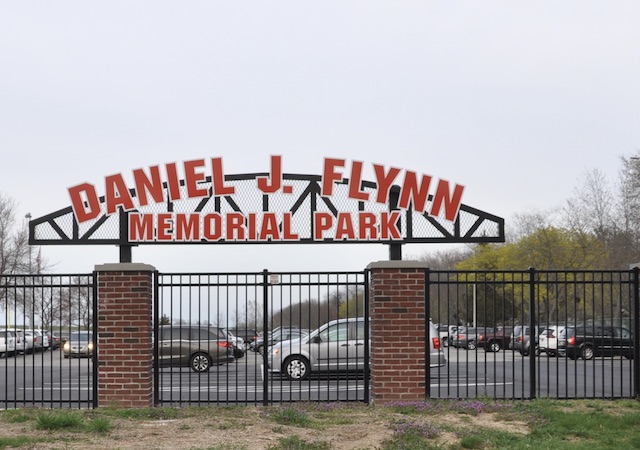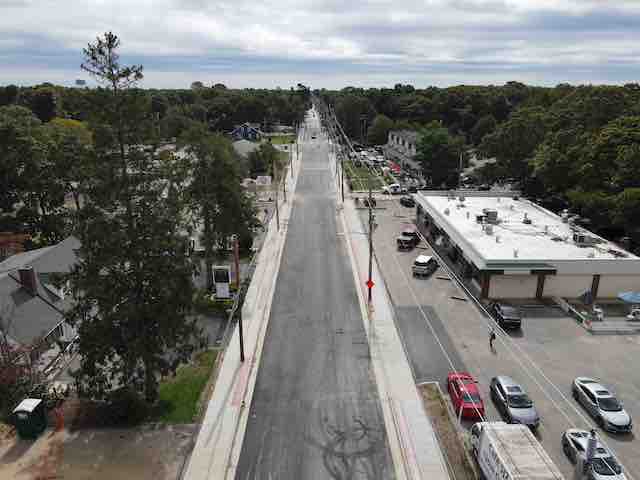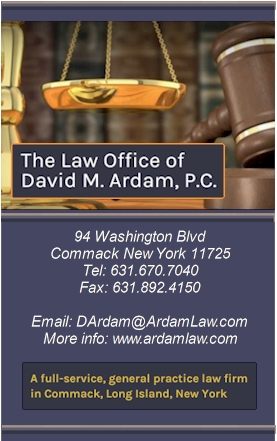News of Long Ago by Bradley Harris, Smithtown Historian
Last article was about Charles Butler and his two year term as Smithtown’s Supervisor from 1924 to 1925. This article deals with the story of his life after the voters retired him from the office of Supervisor in 1925 until his death at the age of 77 in 1954.
“Charles Butler returns to being a lawyer and a gentleman farmer….”
Charles Butlers’ defeat in his re-election campaign for Smithtown Supervisor in the 1925 election must have soured him on politics. As far as I know, he didn’t run for elective office again. He returned to his practice as an attorney in New York City and commuted daily from St. James to his office in Manhattan. He spent a lot of time in the city at work and at play, frequenting concerts, Broadway musicals, and plays. He was a member of a number of clubs in New York City including the Harvard Club, the Down Town Association, the University Club, and the Church Club. He joined the Colonial Lords of the Manor and the Union Society of the Civil War. Professionally, Mr. Butler was a member of the bar associations of New York City and of New York State and was a member of the Phi Delta Phi chapter of the New York Law School. All of the activities conducted by these organizations kept Charles Butler active and involved in the social life of the city. His position as treasurer and Director of the Garden City Corporation kept him actively involved in the development of Garden City on Long Island and his 400 acre dairy farm in St. James ensured that he continued to play an active part in his hometown community.
In St. James, Charles Butler lived at Branglebrink Farm in a house that his brother Lawrence had designed for him. The farmhouse occupied “the top of a hill rise” on the farm and commanded “an extensive view of Long Island Sound.” Here he supervised the operation of his dairy farm where his herd of fifty milch cows supplied milk to “three routes of about five hundred quarts each,” routes that delivered milk to households throughout St. James, Smithtown, Stony Brook and Kings Park. Branglebrink Farm milk was in such demand that “additional local milk had to be obtained for resale” and other nearby dairies benefitted as a result. (Biographical information on Charles Stewart Butler contained in the Butler files of the Long Island Room, Smithtown Library files.)
Charles Butler was a big man with a big heart. Like his mother, Cornelia Stewart Butler, and his older brother, Lawrence Butler, he had a philanthropic streak in his heart. It was Charles Butler who “was a chief organizer of the St. James Fire Department in 1922.” He was the one who persuaded his brother to design the firehouse, then in 1925, he donated land where the firehouse was erected, and finally it was his money that paid for the materials to build the firehouse. Because of his generosity, the men of the St. James Fire Department made Charles Butler an honorary chief and he held that distinction until the end of his life. Members of the St. James Episcopal Church were also beneficiaries of Mr. Butler’s philanthropy. In 1929, he “made a gift of the parish hall” that was built to the east of the Episcopal Church. (“Charles Butler Rites Are Set; Widely Known,” Smithtown Star, October 27, 1954, pg. 1.)
Pete Micciche remembers how Charles Butler helped his grandfather, Joseph Micciche, during the depression. Pete’s grandfather could not find work during the depression and to try and find work he would report to Town Hall to see if he could secure one of the jobs that the town occasionally made available. He always made sure that he would report early in the morning and get his name first on the sign-up sheet before anyone else. But when men were assigned jobs, his name was always ignored. In the 1930’s, there was a lot of prejudice directed at Italians and his grandfather would go home every day, frustrated and bitterly disappointed. When Charles Butler heard about his plight, he offered Pete’s grandfather a job as gardener at Branglebrink Farm, and he went to work maintaining the grounds and gardens for $25 a month. He worked for Charles Butler for almost thirty years maintaining a beautiful flower and vegetable garden that was just behind the house.
Mr. Butler was a friendly, gregarious man who mixed easily with people. He was generous to his employees and their families at Christmas time. Peggy Micciche and Sissy ? recalled that Mr. Butler was a tall, big man, who always had an annual Christmas party in his home, and since their grandfather worked as Mr. Butler’s gardener, they were always invited to the party. Peggy remembers that the party was held in a “big dark room” (the parlor) where they all gathered, and then Mr. Butler would personally hand out the Christmas presents he had purchased for the children.
Mr. Butler was also a proud man, proud of the fact that he was a descendant of the bull rider, Richard Smythe. In fact in 1936, during Smithtown’s annual Horse Show, he demonstrated his prowess at bull riding by actually riding one of the bulls from his farm. You can see from the photograph accompanying this article that two employees from his farm had the bull carefully in check, one with a halter around the bull’s neck and the other with a pole attached to the ring in the bull’s nose. Charles Butler seemed to be having a fun ride and we can only wonder what he was carrying in the paper bag in his right hand – perhaps some trinkets for the local Indians? Charles Butler was also a very flamboyant dresser and an actor and there was no part he liked to play better than that of Richard Smythe. For a costume ball, he had a special red velvet suit with matching a pilgrim’s hat created so he could play and look the part of his famous ancestor. His costume is now a part of the Smithtown Historical Society’s garment collection.
Charles Butler was also a very funny man. Perhaps the funniest line he ever delivered was at a town board meeting that is said to have happened in the early 1950’s when Paul Given was Supervisor of Smithtown. It seems that it wasn’t too long after the statue of the bull was unveiled that the young women in the School of Nursing at the Kings Park State Hospital decided to make an annual pilgrimage to the statue to paint the bull’s testicles red. The girls thought it was a hilarious stunt, but the men of the town parks department who were assigned to clean up the bull were a little put off by the task. To make matters worse, other pranksters in town began to do the same thing. The whole matter of what to do about curtailing the decorating of the bull’s privates was discussed at a town board work session and nobody could come up with a solution until one board member suggested in jest that the thing to do was castrate the bull. At that point, Charles Butler, who just happened to be in attendance that day, jumped up and demanded to be recognized. He took a long serious look at each and every board member and then said to the members of the board, “I object! I object! You can’t castrate the bull because there are no descendants of Richard Smythe presently on the Town Board. And there shall be no castration without representation!” That ended any further discussion of castration.
When Charles Butler passed away October 26, 1954, six months after his brother Lawrence, he was laid out by his own request in the parlor of his home at Branglebrink Farm. The parlor was a long narrow room that had a ceiling that was shaped like the interior of a coffin and Mr. Butler had the ceiling and walls painted with a coppery colored paint. The overall effect was that you felt as if you were in a large coffin whenever you entered the room. What possessed the man to create this room, and to entertain and live in the room long before his actual death, is something that is only known to Charles Butler. But it was in this room where Charles Butler was actually placed in his coffin, and people came to pay their last respects, before his body was taken to the St. James Episcopal Church for his funeral service and internment.
Since Charles Butler never married, everyone wondered what would happen to his estate. When his heirs petitioned the Surogate’s Court for probate, the value of Charles Butler’s estate was estimated to be “over $50,000” in personal property and “over $100,000 in realty.” When the will was probated, it was revealed that Mr. Butler had made a number of bequests. He gave the St. James Episcopal Church $20,000; the Trustees of St. Mark’s School in Southborough, Mass., $2,000; the Episcopal Cathedral of the Incarnation in Garden City, $3,000; and the New York Association for the Blind in Manhattan, $5,000. He bequeathed $5,000 to his cousin Cornelia S. Osborne; $1,000 to his cousin and godson James L. Osborne; $1,000 to his godson Tudor H. Owen; and $1,000 to his goddaughter Mary C. W. Hiller. He left $5,000 to Walter H. Grimm of Rancho Sante Fe, California; $40,000 to his secretary, Reginald C. Massonneau; $5,000 to Mrs. Elizabeth Shaw of Amarillo, Texas; and to Mrs. Marguerite Swann Musgrave of Pittsfield, Mass. and to the children of her marriage to Peter Musgrave Jr., he bequeathed the property known as “Linwood” at Stockbridge, Mass. There were a number of other small bequests including personal effects that he gave to friends and family members, a gift of $1,000 to his attorney James Stanislaw of Lake Avenue, St. James, and a $500 gift to the St. James Fire Company. The rest of his estate was “devised to Susan L. Huntington,” his sister, and Jack Stanislaw, his “friend and attorney,” was appointed “executor.” (“Church at St. James to Get $20,000 in Supervisor’s Will,” unattributed newspaper clipping found in the Butler file in the Long Island Room of the Smithtown Library, courtesy of Kathy Ball.)
Charles Stewart Butler left a remarkable legacy to his sister Susan Butler Huntington when she became the beneficiary of the 400 acres of property that made up Branglebrink Farm. What she did with that property and how she left her own imprint on the history of Smithtown is a story that will have to wait until next week….
 Thursday, October 31, 2013 at 11:14PM
Thursday, October 31, 2013 at 11:14PM 






